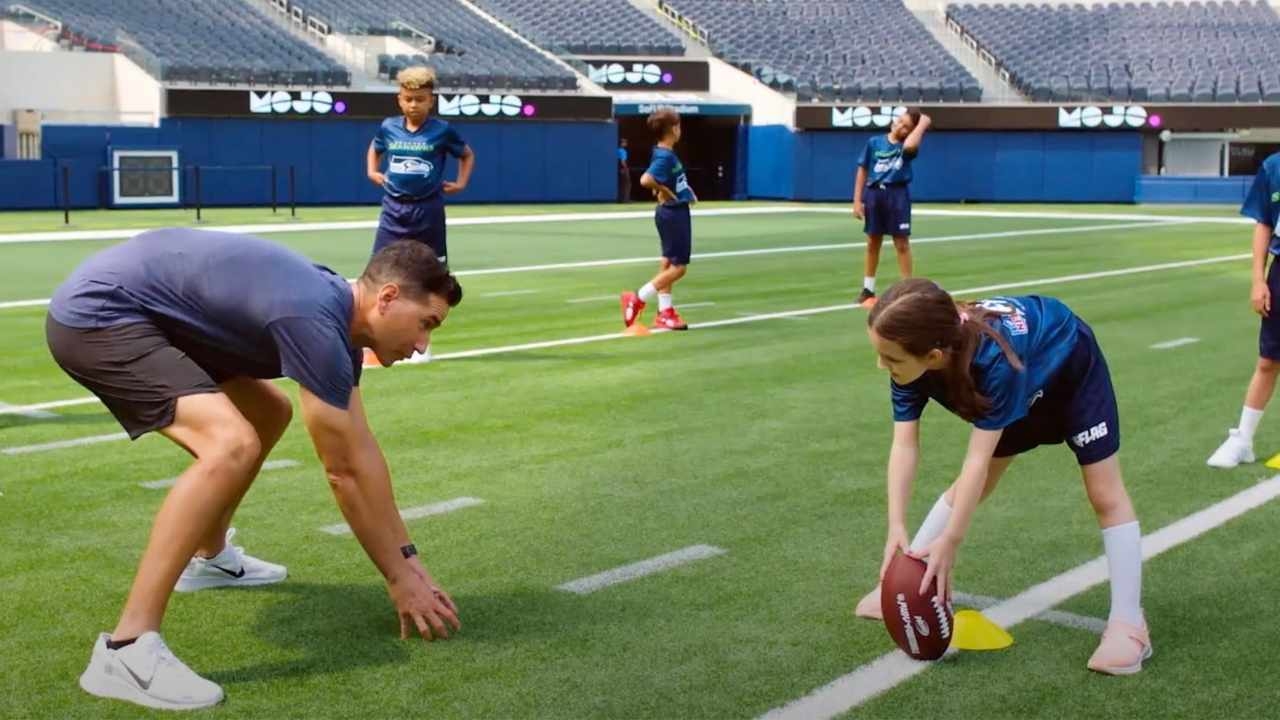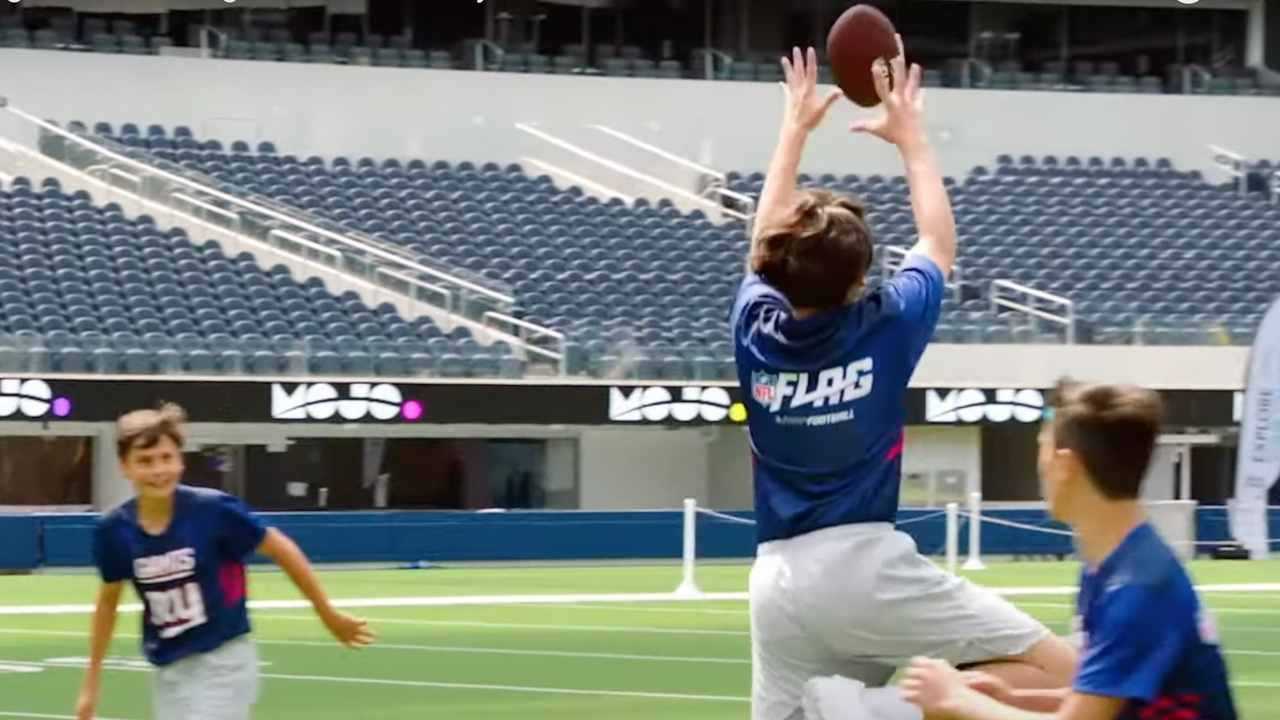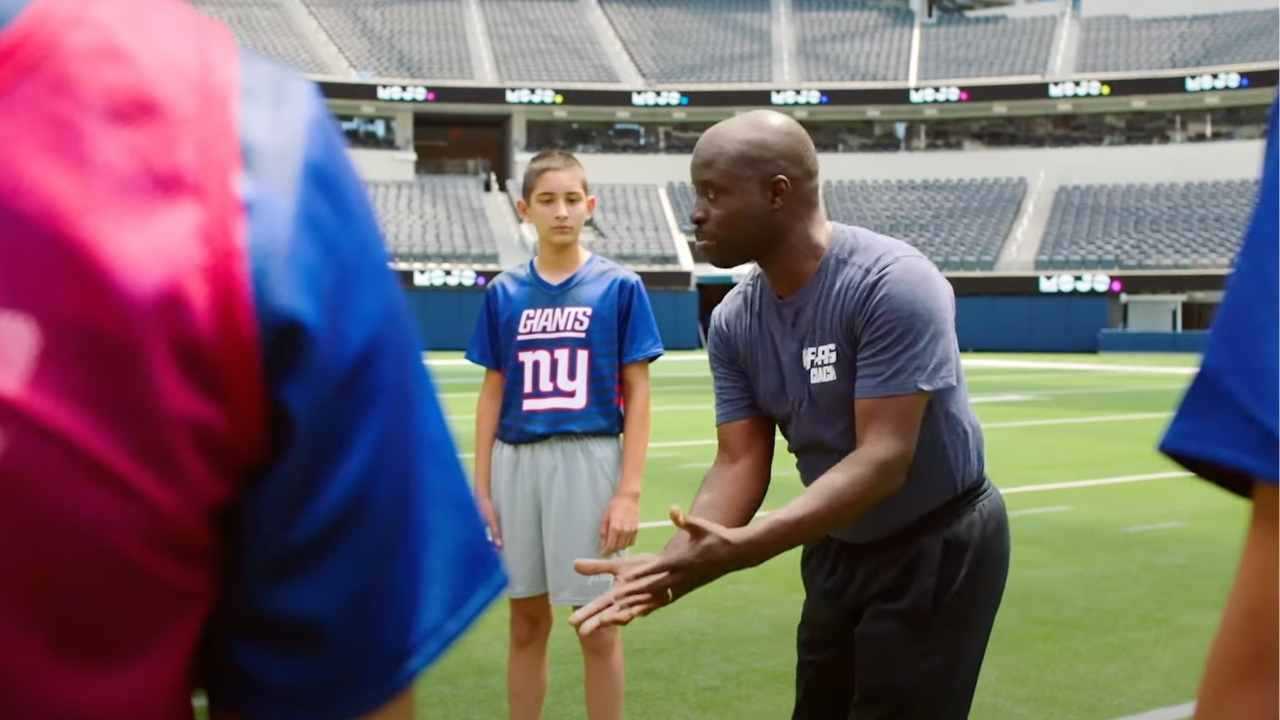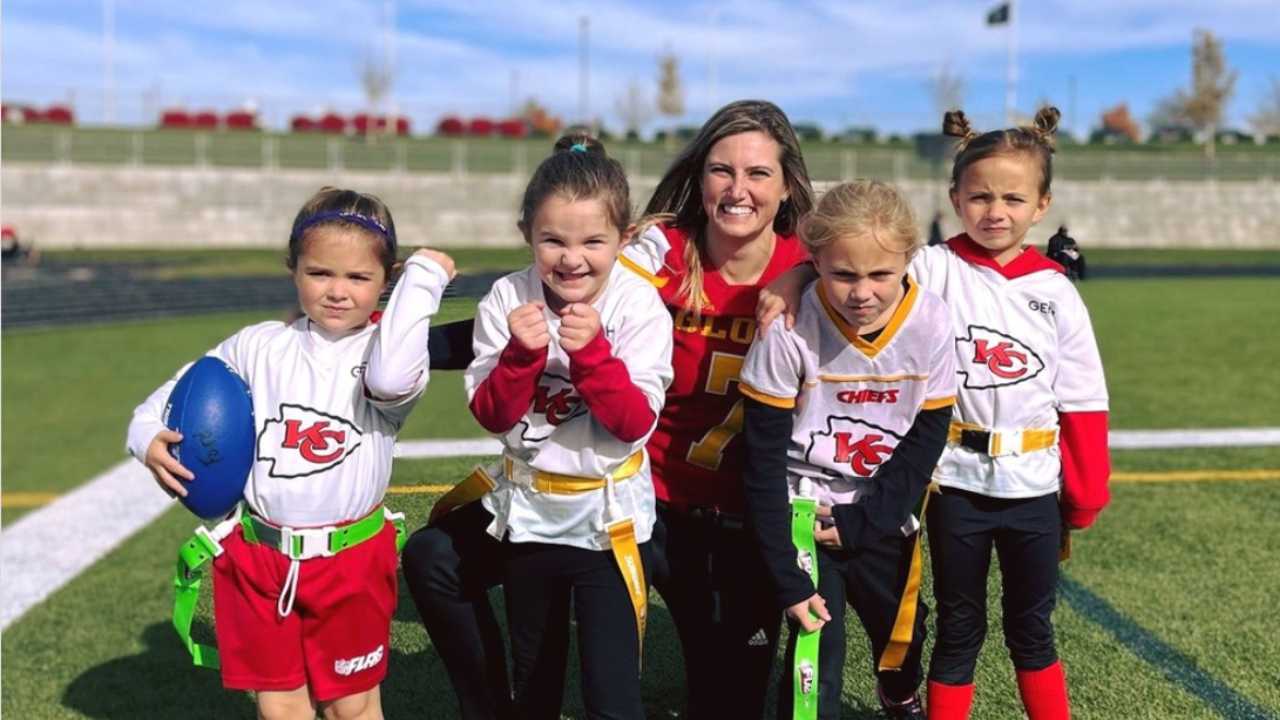How to Snap the Football
The essential move that starts it all
Team MOJO
| 3 min read

A snap is the crucial ball exchange between the center and the quarterback. It starts each offensive play throughout a football game. The ball is live at the time of the snap and stays live until the officials stop the play. Go-time is the moment the ball leaves the ground normally when the quarterback yells “hike!”
Per NFL Flag rules, each time the ball is spotted — placed on the line of scrimmage by an official — the offensive team has 25 seconds to snap the ball (or 40 seconds from the end of the previous play).
The anatomy of a good snap
To start, the center lines up with feet wider than shoulder-width. Knees should be bent to keep the player’s center of gravity low for better balance and stability. Bent knees also allow for quick movement after the snap — to run a route.
The center holds the football on the ground either behind or on the line of scrimmage, with the quarterback standing behind.
The actual snap technique may vary from league to league. Some leagues have the center stand up, twist and hand the ball back to the quarterback. Most football purists prefer the snap between the center’s legs because it teaches kids the correct technique for tackle football.
At younger ages, on the quarterback’s call, the center brings the ball backward between their legs and holds it there until the quarterback takes it. The center can hold the ball with one or two hands — whichever is more comfortable. Long-snapping — a more advanced move for older players — has the center tossing the ball back to the quarterback in a tight spiral that’s easy to catch.
The offense has three snaps to try to get a touchdown during their time of possession over two 20-minute halves. To put it simply: there are a lot of opportunities to get the snap right. Or wrong. Turns out it’s not easy to toss a ball backward to the same spot every time.
Beware the bad snap
A bad snap is one the quarterback can’t grab or catch and the ball hits the ground. When this happens, the ball is “dead.” It’s then spotted where it hit the ground — behind the previous line of scrimmage. Not the direction the offense wanted to go. NFL Flag rules give 6U & 7U teams one “do over” with no loss of down after a bad snap.
Another hazard to watch out for is an offsides call. The center’s head needs to stay behind the ball. If it crosses the line of scrimmage before the hike, it’s considered offsides.
It may be just an exchange, but position and precision makes all the difference in this play-starting move.




